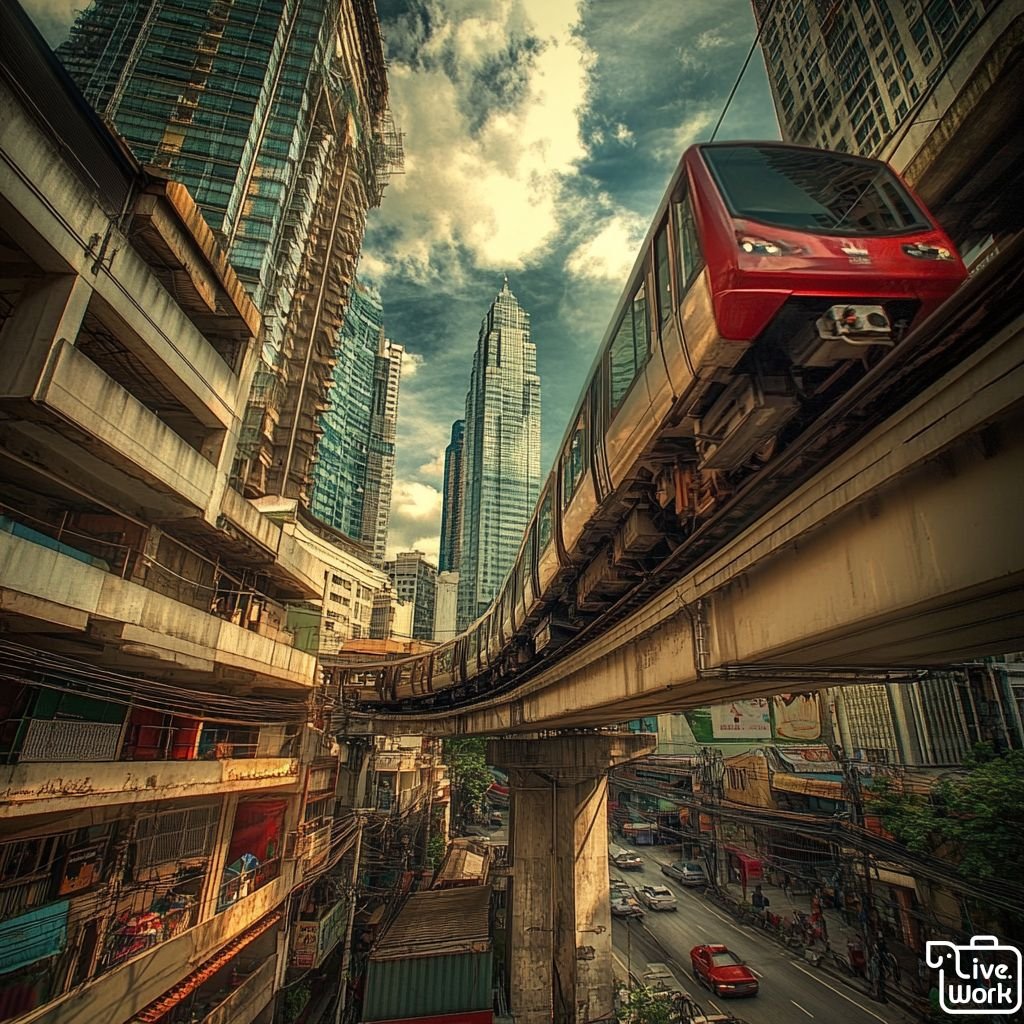Getting Around Thailand: A Guide to Public Transportation for Smart, Sustainable Travel
Exploring Thailand doesn’t require a car—or even a tour guide. Thanks to its versatile, affordable, and surprisingly efficient public transportation system, Thailand offers travelers and expats alike a range of options to navigate the country with ease and authenticity.
From high-tech urban trains to charming tuk-tuks, each mode of transport offers not only a ride but a window into Thai life. Whether you’re commuting in Bangkok or heading to a far-flung village in the north, you’ll find that getting around is part of the adventure.
🚆 BTS Skytrain: Bangkok’s Elevated Answer to Traffic
Ask anyone living in Bangkok, and they’ll tell you: the BTS Skytrain is a game-changer. Soaring above the city’s congested streets, this elevated rail network is modern, fast, and reliable—the perfect way to beat Bangkok’s legendary traffic.
Covers key districts like Siam, Silom, Sukhumvit, and Chatuchak.
Air-conditioned, clean, and equipped with English signage.
Prepaid Rabbit Cards make tap-in travel quick and hassle-free.
For expats, it’s not just transport—it’s a lifeline. Many choose to live near BTS stations for seamless access to work, shopping, and nightlife.
🚇 MRT Subway: Bangkok’s Underground Network
Complementing the BTS is the MRT, Bangkok’s growing underground rail system. The MRT serves important neighborhoods and transit hubs like Hua Lamphong Railway Station, Chatuchak Market, and the cultural quarter of Ratchadaphisek.
It's a great way to explore Bangkok below the surface—literally and metaphorically.
🛺 Tuk-Tuks: Iconic, Unpredictable, and Full of Charm
No trip to Thailand is complete without a ride in a tuk-tuk. These three-wheeled motorized rickshaws offer short-distance rides with an added dose of character and nostalgia.
Best for short hops around tourist areas or markets.
Fares should be negotiated before the ride—prices vary with distance, time, and driver mood!
Not the most comfortable or quiet, but definitely memorable.
Tuk-tuks reflect the playful energy of Thai street life, and they remain a beloved symbol of urban transport in cities like Bangkok, Chiang Mai, and Ayutthaya.
🚌 Intercity Buses: Reaching Every Corner of the Country
Thailand’s long-distance bus system is vast and accessible, connecting major cities with rural towns and everything in between.
Operated by both government services and private companies.
VIP buses offer reclining seats, onboard toilets, and snacks—ideal for overnight journeys.
Tickets can be booked at bus terminals, online, or through travel agencies.
For expats or digital nomads exploring lesser-known areas, the bus is often the most economical and flexible option available.
🚂 Trains: Scenic Routes and Slow Travel at Its Best
Thailand’s rail network, operated by the State Railway of Thailand, is an excellent option for budget-friendly and scenic long-distance travel. Trains run to key destinations like Chiang Mai, Hua Hin, Kanchanaburi, and Surat Thani (for Koh Samui ferries).
First and second-class sleeper cars offer comfort and air conditioning.
The views through rice fields, jungles, and villages are unbeatable.
Trains are punctual-ish—best for relaxed travelers who aren’t in a rush.
Trains offer not just transport, but a journey, perfect for those who appreciate slow travel and cultural immersion.
🛳 Ferries and Boats: Coastal and Island Hopping
Heading to the islands? Thailand’s ferry network connects mainland piers with islands like Koh Samui, Koh Phangan, Koh Tao, and Phuket.
High-speed catamarans, local ferries, and overnight boats are all available.
Bangkok also offers riverboats along the Chao Phraya River, a charming way to explore historic districts and temples.
For eco-conscious travelers, ferries are often less polluting than short domestic flights, and they provide panoramic views of the coast and sea.
🌱 Public Transport and Sustainability
Thailand is increasingly investing in eco-conscious mobility, especially in cities like Bangkok and Chiang Mai. Electric buses, smart ticketing, and growing awareness of carbon-friendly travel all reflect the country’s commitment to sustainable tourism.
By using public transport, you're not only saving money—you’re reducing your footprint and contributing to a more sustainable future for Thailand's cities and natural landscapes.
Tips for Navigating Thai Public Transport Like a Pro
Have small cash or coins for bus and boat fares.
Use apps like Grab, ViaBus, or Google Maps for real-time transport info.
Learn basic Thai phrases, or have destinations written in Thai script—especially for rural areas.
Be patient—schedules can shift, but flexibility is part of the charm.
Final Thoughts: Travel That’s More Than Transport
Thailand’s public transportation isn’t just functional—it’s an experience. Whether you’re exchanging smiles on a shared songthaew, watching sunrise from a train window, or gliding through the city on the BTS, you're immersing yourself in local life.
